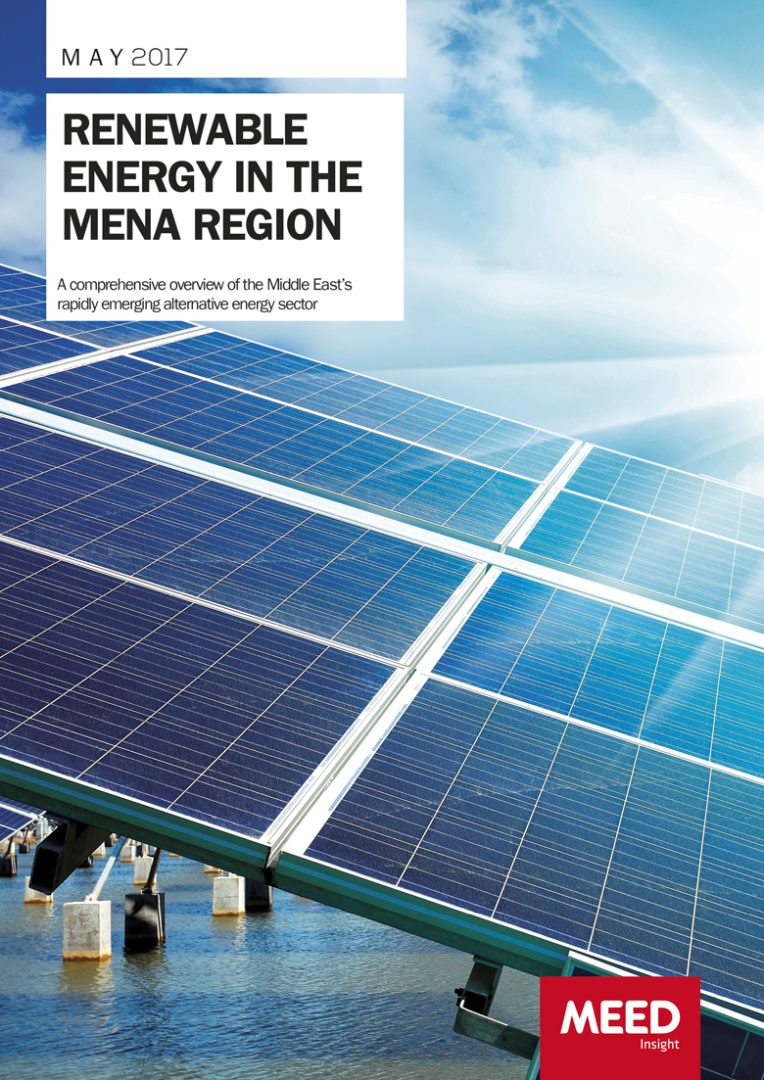

Several countries in the region have set targets of 20 per cent and above for renewable energy capacity by 2030
While the Middle East and North Africa (Mena) region has long been synonymous with the worlds largest oil and gas reserves, it is also emerging as one of the biggest potential renewable energy markets.
The regions power sector is undergoing a seismic shift, with renewable energy at the heart of this. The move towards clean energy has been driven by several factors, from governments seeking to shore up energy security through diversification, to a new global push to reduce carbon emissions and cut the harmful impact of electricity generation on the environment.
Realising potential
Unsurprisingly, due to the regions significant hydrocarbons reserves, the Middle East has been slow to adopt renewable energy. However, this has started to change significantly over the past five years.
In 2013, Abu Dhabi commissioned the regions first utility-scale solar facility, the 100MW Shams 1 concentrated solar power (CSP) plant. Since then, the dramatic fall in the cost of photovoltaic (PV) solar has resulted in Mena utilities launching some of the worlds largest solar schemes, which have been supported by the submission of record low tariffs. From almost an absence of renewable energy 10 years ago, most countries in the region now have some form of renewable energy targets.
The shift towards renewables is not a surprising one. The region enjoys some of the highest solar irradiation levels in the world, ideal for both PV and CSP technologies to be integrated into networks across the region. The GCC countries are located on the Global Sunbelt, a geography of countries that are characterised by high solar irradiation. According to data from the UAE-based International Renewable Energy Authority (Irena), almost 60 per cent of the GCCs surface area has excellent suitability for PV solar, and developing just 1 per cent of this area could create a staggering 470GW of additional power capacity.
There are also more than sufficient wind resources in many areas of the Mena region, with the Red Sea coast and Gulf of Suez areas in Egypt prime locations, to enable the development of significant wind capacity. In addition to advantageous climatic conditions, the region has vast tracts of uninhabited desert to build capacity on.
Demand for power across the Mena region is continuing to accelerate. MEED forecasts that utilities will need to install an additional 150,901MW of generating capacity to reach 439,662MW by 2020 to meet expected demand, an increase of just over 50 per cent on the current available capacity of 289,861MW.
With the regions population expanding at a rapid rate, forecast to rise from 425 million in 2015 to 700 million by 2050, and governments pushing ahead with aggressive industrial diversification programmes, the need for additional power resources will remain robust in the coming three decades.
For the 12 countries covered in MEEDs latest research report, Mena Renewables 2017, total installed generating capacity in 2015 was 271,761MW, with 19,791MW or just over 7 per cent of this comprising renewable energy. However, the vast majority of this is hydropower, with only Morocco in North Africa and Abu Dhabi and Dubai in the UAE having so far commissioned large solar schemes with capacities greater than 100MW.
Lower tariffs
This is set to change significantly in the coming years, with the recent low prices being achieved for utility-scale projects throughout the region altering the perceptions of governments and utilities. Current efforts to phase out fuel subsidies following the collapse in oil prices will further heighten the attraction of renewables projects as utilities have to contend with the true cost of power production.
MEED estimates that 67GW of renewable energy schemes are at different stages of the design and study phase and with several countries having set targets of 20 per cent and above for renewable energy capacity by 2030, the region can become a focal point for the sector.

MEEDs Mena Renewable Energy 2017 report
MEEDs Mena Renewable Energy 2017 report
This article is an excerpt from MEEDs Mena Renewable Energy 2017 report. Buy it here
You might also like...

TotalEnergies to acquire remaining 50% SapuraOMV stake
26 April 2024

Hyundai E&C breaks ground on Jafurah gas project
26 April 2024

Abu Dhabi signs air taxi deals
26 April 2024

Spanish developer to invest in Saudi housing
26 April 2024
A MEED Subscription...
Subscribe or upgrade your current MEED.com package to support your strategic planning with the MENA region’s best source of business information. Proceed to our online shop below to find out more about the features in each package.




